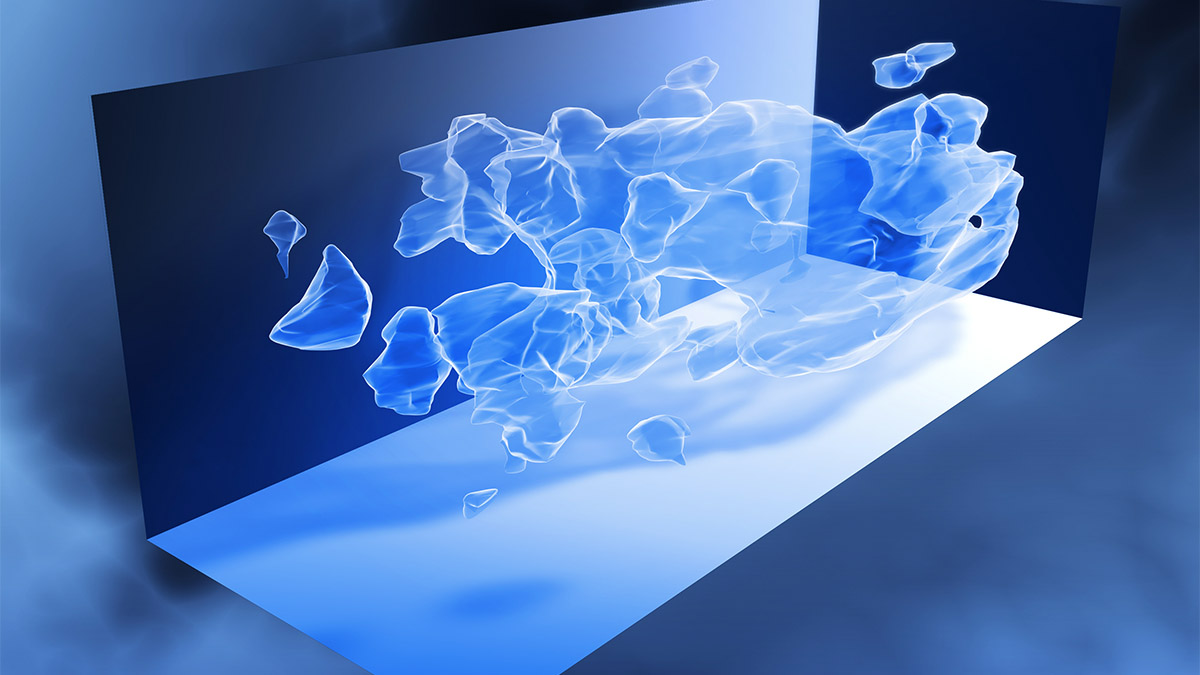explaining the origins of dark matter. or not.

Ordinary baryonic matter, the stuff from which living things, planets, stars, and galaxies are composed, is just a bit player in the grand scale of things. Accounting for about 4.6% of the universe’s mass and energy content, it’s easily overshadowed by dark matter, the invisible clumps of something which creates gravitational lenses and lets spiral galaxies keep their shape instead of flying apart or blending into mush. But this phenomenon presents an interesting conundrum. It makes up nearly a quarter of the universe and yet, we can’t image it or take a sample of it. All we can do is make maps of were it seems to be acting on stellar bodies or stretching the fabric of space and time under its immense mass. Plenty of physicists and astronomers argued that it’s just noise in the observational data or that it doesn’t even exist because direct evidence for it is rather slim, and few things send popular science blog readers as worked up as exotic theories about it. But the fact of the matter is that it, or something a lot like it, is there and we need to explain what it is and how it first appeared.
To that end, comes a recent proposal by three physicists which tries to pin down a common ancestor to dark matter and baryonic matter. Since the standard model of physics likes to pair particles with antiparticles, the idea is that in the primordial universe, the initial pairs of nascent particles and their counterparts could decay into quarks that would combine into baryons, and into anti-baryons which we would call dark matter. And just like any particle/anti-particle pair, dark matter and baryonic matter annihilate each other, potentially messing up the search for the evidence of the decay of nucleons on our end, evidence which could either lead to new general unification theories, basically theories of everything, or confirm an existing theory by giving us some idea about the stability of protons in nuclei. Currently, we’re pretty sure that protons are extremely stable and the first batch of them produced during the Big Bang will be around for eons, or 6.6 × 1033 years if you really want to get technical about this sort of thing. But if their lifetime turns out to be much shorter than that and the proton decays into a positron (an anti-proton) and two photons, we’d need to start re-writing how we measure interactions between subatomic particles and ultimately, the story of baryogenesis, the birth of matter as we know it. So if dark matter is really some sort of exotic antimatter, it may explain a lot about the universe.
However, there’s a number of problems with this proposal. Every time you have two opposite types of matter, baryonic or not, you should be dealing with equal amounts of both. That’s what the standard model needs to keep the energies involved in particle interactions in balance, otherwise you could violate the conservation of mass and energy. To get unequal amounts of say, matter and antimatter, you’d need to break symmetry and create an imbalance in the way the particles are being created. When ordinary baryonic matter won out over antimatter in the early universe, the imbalance was around 1% at the very most, something that’s already very difficult to accurately explain and sent some physicists on a search for signs of proton decay to explain some complex nuances in particle interactions. If we’re talking about dark matter emerging from an imbalance with ordinary matter, we may be talking about an even greater asymmetry which is even more difficult to back up in light of how hard it is to break symmetry in the first place, even mathematically. And making things more tricky here is the fact that the physicists cast dark matter as “anti-baryonic matter,” and from what I understand, the antithesis of baryonic matter is plain old antimatter. In effect, we’re being told that dark matter is really better known as antimatter and instead of winning over antimatter during baryogenesis, matter is outnumbered five to one in the known universe. The first instants of the Big Bang have been flipped on their head.
So if we’re faced with dark matter being just big clumps of antimatter, a whole set of questions emerge. Dark matter is supposed to only indirectly interact with matter and have a density far higher than you’d expect from antimatter or regular baryonic matter. Antimatter, on the other hand, is basically a mirror image of matter with an opposite charge and can directly interact with it. If dark matter was really just antimatter, we’d expect to see gamma ray explosions coming from parts of the sky from where clumps of matter and antimatter collide. We don’t. Obviously antimatter can’t fill dark matter’s shoes, no matter how many “hidden sectors” or other rather buzzword-laden obfuscations were created to justify this decay concept, and rather than explaining the origins of the mysterious stuff seemingly filling a quarter of the universe, the physicists in question simply threw out an idea that flips the matter/antimatter asymmetry at the dawn of the cosmos and presents that as a potential solution to the questions of what dark matter really is and from where it came.
See: Davoudiasl, H., Morrissey, D., Sigurdson, K., & Tulin, S. (2010). Unified Origin for Baryonic Visible Matter and Antibaryonic Dark Matter Physical Review Letters, 105 (21) DOI: 10.1103/PhysRevLett.105.211304





